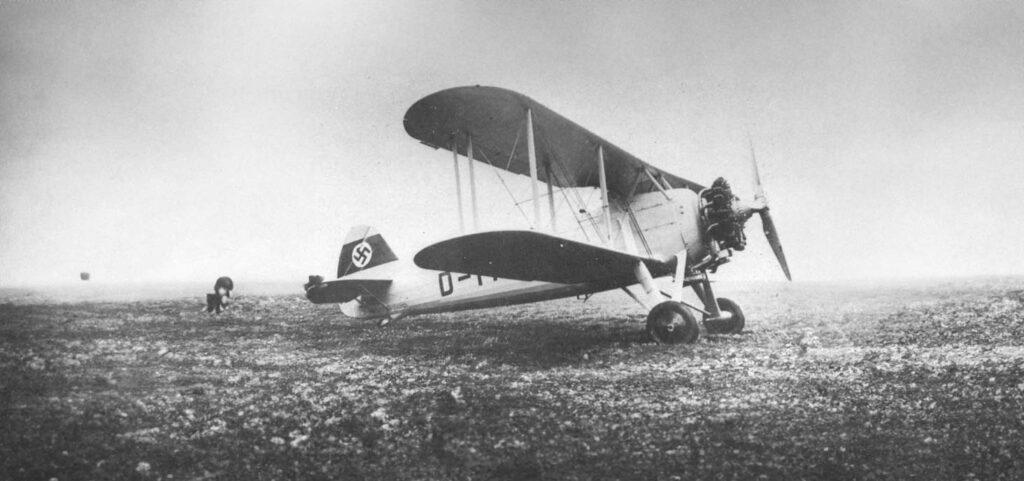The Heinkel He 50, a German 1930s biplane, served as a dive bomber and reconnaissance aircraft, notable for its Siemens-Halske Sh 22 engine. This article provides an in-depth look at the Heinkel He 50, exploring its development history, design features, performance capabilities, and military use. It highlights the aircraft’s role in the early years of dive bombing and reconnaissance during a pivotal era in military aviation.
The Heinkel He 50 played a significant role in the development of aerial warfare tactics, particularly in dive bombing and reconnaissance missions. This article examines the development, design, performance, and operational history of the Heinkel He 50, a notable aircraft of the early 1930s.
History of the Development of the Heinkel He 50:
During the early 1930s, military aviation was undergoing rapid development, with nations seeking versatile aircraft capable of multiple roles. The Heinkel He 50 was developed against this backdrop, addressing the growing demand for effective dive bombers and reconnaissance aircraft.
Heinkel Flugzeugwerke, led by its founder Ernst Heinkel, initiated the development of the He 50. The project aimed to create an aircraft that could provide accurate bombing capabilities and effective reconnaissance, responding to the evolving military doctrines of the time. The He 50 first flew in 1931, showcasing a design that balanced the demands of dive bombing and reconnaissance missions.
This period was marked by experimentation with aircraft roles and configurations. The He 50 was developed in response to these trends, aiming to bolster Germany’s burgeoning air power and tactical versatility.
Design of the Heinkel He 50:
The Heinkel He 50 was designed as a robust and versatile biplane. It had a wingspan of 11.50 meters (37 ft 9 in) and a length of 9.10 meters (29 ft 10 in). The aircraft featured a mixed construction, with a metal frame and fabric covering.
Powered by a Siemens-Halske Sh 22 radial engine, the He 50 was capable of generating approximately 660 horsepower. This engine choice was a key factor in its dive bombing and reconnaissance capabilities.
The He 50’s design included an open cockpit, fixed landing gear, and the capability to carry a modest payload of bombs. It also featured dive brakes, which were innovative for its time. However, as a biplane, its speed and maneuverability were limited compared to emerging monoplane designs.
Despite these limitations, the He 50 set new standards for dive bombers of its era, particularly in terms of robustness and operational flexibility.

Performance of the Heinkel He 50:
The Heinkel He 50’s performance was notable in its context. The Siemens-Halske engine enabled a top speed of around 205 km/h (127 mph), with a service ceiling of about 4,200 meters (13,780 feet) and a range of approximately 800 kilometers (497 miles).
Compared to contemporaries such as the American Curtiss Helldiver or the Japanese Aichi D1A, the He 50 was competitive in terms of dive bombing accuracy but lagged in speed and altitude capabilities. Its robust construction, however, made it a reliable aircraft for its intended roles.
Military Use and Combat of the Heinkel He 50:
The Heinkel He 50 was primarily used by the German Luftwaffe and saw action in various conflicts in the 1930s, including in the Spanish Civil War. Its armament typically consisted of one forward-firing machine gun and a rear gun for defense, along with the capacity to carry bombs for dive bombing missions.
While the He 50 did not see extensive service in World War II, it played a crucial role in the early development of dive bombing tactics. Its performance in the Spanish Civil War provided valuable insights into the effectiveness of dive bombing.
The aircraft was eventually replaced by more advanced models, but its influence on dive bombing tactics was significant.
The Heinkel He 50, developed in the early 1930s, was a pivotal aircraft in the realm of dive bombing technology, illustrating the rapid advancements in military aviation during that period. Originally designed as a biplane for the Imperial Japanese Navy, it was later adopted by the Luftwaffe, primarily used as a dive bomber and reconnaissance aircraft. Featuring a single-engine design, it was known for its sturdiness and reliability, qualities essential for the demanding requirements of dive bombing. While it was eventually overshadowed by more advanced aircraft as World War II progressed, the He 50 played a significant role in the early tactics of aerial warfare, especially in the Luftwaffe’s Blitzkrieg strategy, demonstrating the increasing importance of airpower in modern military conflicts.
Back to the Bombers section.